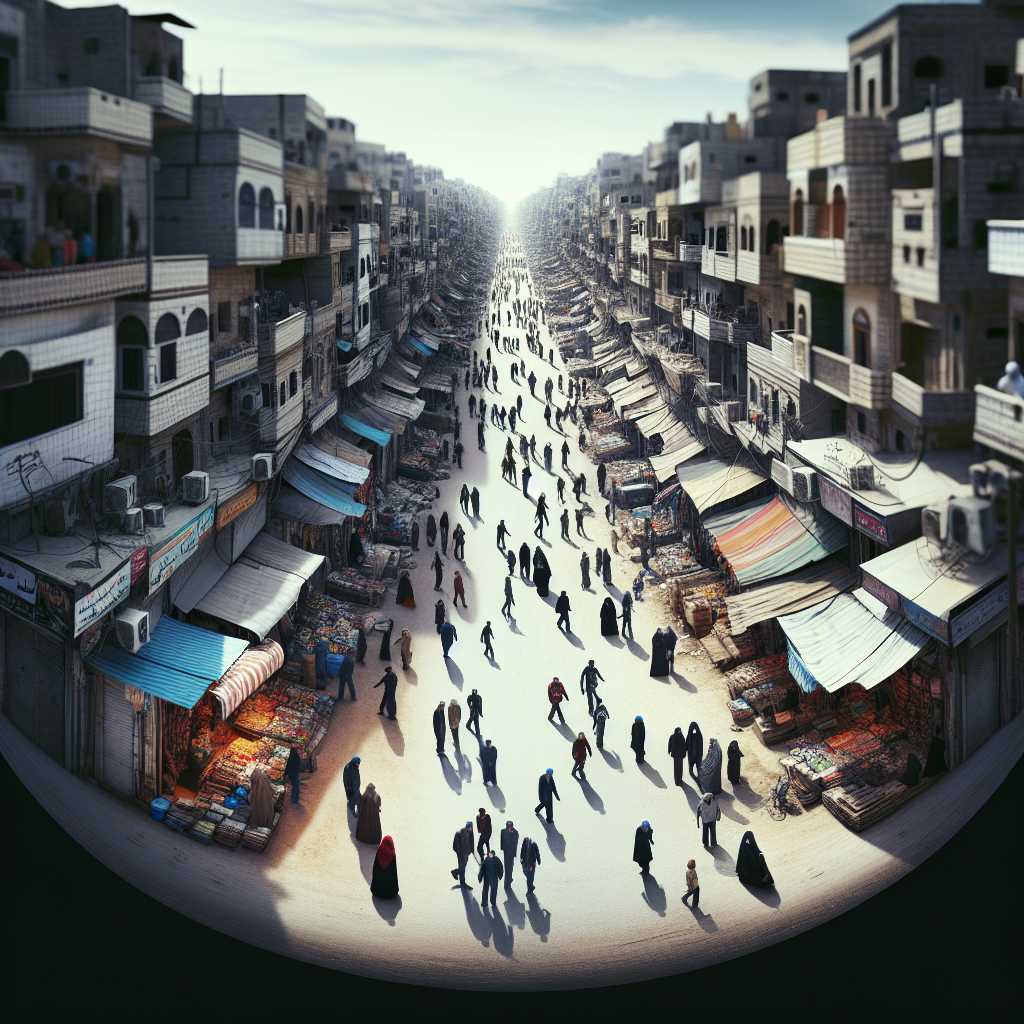Understanding Rafah: A City Divided by Borders and Conflict
Rafah is a city that encapsulates the complexities of the modern-day Middle East. Straddling the borders of Egypt and the Gaza Strip, a Palestinian territory governed by the Hamas movement since 2007, Rafah has become synonymous with border crossings, conflict, and the humanitarian issues that stem from these factors. As we delve into the details about Rafah, its geographic and political significance, and the daily life of its inhabitants, it’s essential to maintain an unbiased perspective, presenting the information as neutrally as possible.
Geographic Significance of Rafah
Strategically positioned at the southeast corner of the Mediterranean Sea, Rafah’s location has historically made it a nexus for trade and cultural exchange between Africa and Asia. However, in contemporary times, this placement has also resulted in Rafah becoming a hotly contested and militarized zone. The city is separated into two distinct parts: Rafah in the Southern Gaza Strip and Egyptian Rafah. The division is due to the presence of the Egypt-Gaza border.
Historical Overview
Historically, Rafah was part of ancient trade routes that linked Egypt with locations throughout the Levant. Over centuries, various empires controlled the region, including the Egyptians, Hittites, Byzantines, Ottomans, and British among others. Post-World War II, after a short period under Egyptian control, Rafah became part of newly created Gaza Strip following armistice agreements between Israel and Egypt after the 1948 Arab-Israeli War.
Current Political Landscape
Today’s political situation in Rafah reflects broader regional concerns and conflicts. Since Hamas took control of Gaza in 2007, restrictions have been placed on the city by both Israel and Egypt due to security concerns. The result has been recurring military confrontations and strict blockades affecting trade, travel, and living conditions for the residents of Rafah.
Daily Life in Rafah
The realities of life in Rafah can be harsh. The combined impacts of political tension, economic blockades, and intermittent military actions have led to difficulties in accessing essential services. Healthcare systems are strained, education is often disrupted by conflict, and infrastructure struggles to cope with demands due to border closures which impede construction materials’ entry.
Impact of Border Crossings
Perhaps one of Rafah’s most notable aspects is its crossing point—Rafah Border Crossing—which intermittently opens to allow people and goods to move between Egypt and Gaza. It is regarded as a lifeline for Gazans, as it can represent an opportunity for access to broader markets, medical treatment abroad, and familial connections outside Gaza. The crossing’s status is an indicator of regional tensions—when relations thicken between Gaza’s rulers and Egypt or Israel, it frequently closes.
Socio-Economic Considerations
In contrast to its challenging conditions, Rafah has demonstrated resilience among its people. However, high unemployment rates due to restricted trade can dominate prospects for many citizens. Economies of necessity have sprung up with tunnels being constructed underneath borders for smuggling goods which for many is not just a means to an end but rather a symbol of resistance against an imposed isolation.
Efforts Towards Stability
Various international organizations have made attempts to ameliorate circumstances in Rafah through aid initiatives focused on health care provision, education establishment-rebuilding programs, and infrastructure projects. Nevertheless, sustainable development remains an uphill task in such a politically tied environment.
Future Projections
The future of Rafah will likely continue to reflect broader geopolitical dynamics concerning Palestinian–Israeli relations and Egyptian diplomacy within the region. Prospects for growth or stability are tightly entwined with any steps towards peaceful resolution between conflicting parties across wider politico-social landscapes in the Middle East.
Cultural Highlights
Despite the challenges faced by its inhabitants, Rafah celebrates a rich cultural identity reflected in cuisine, festivities, oral histories, music, and dance which intertwines elements from various Middle Eastern heritages giving testament to its position as a cultural melting pot throughout history but also preserving uniquely Palestinian traditions.
Notes
*Image description: A panoramic photo depicting a street within Rafah with pedestrians possibly surrounded by small shops or stalls—difficulty seeing past can be attributed to evidence of ongoing challenges faced by its residents.*
